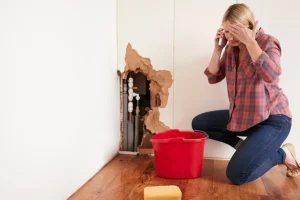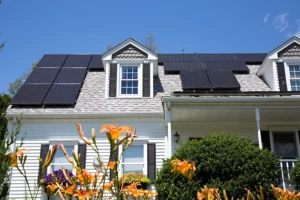Proper maintenance of your plumbing system is essential to ensure your home runs smoothly and efficiently. Neglecting regular upkeep can lead to costly repairs, water damage, and even health hazards. At MB Heating & Cooling, Plumbing & Electric in Springfield, IL, we understand the importance of a well-maintained plumbing system and are here to help you achieve maximum efficiency. In this blog, we’ll provide a comprehensive plumbing maintenance checklist to keep your system in top condition.
Understanding Your Home’s Plumbing System
Your home’s plumbing system is a complex network of pipes, fixtures, and appliances designed to bring clean water in and carry wastewater out. It includes supply lines, drainpipes, vents, and various appliances such as water heaters and sump pumps. Regular maintenance ensures that each component functions correctly, preventing leaks, blockages, and other issues that can disrupt your daily life. A well-maintained plumbing system not only enhances efficiency but also extends the lifespan of your fixtures and appliances.
Inspect for Leaks
The first step in maintaining your plumbing system is to inspect for leaks regularly. Even a small leak can waste a significant amount of water over time, leading to higher utility bills and potential water damage. Check all visible pipes, including those under sinks, behind toilets, and in the basement or crawl space. Look for water stains, drips, or puddles that indicate a leak. Additionally, pay attention to your water meter. If it continues to run even when all water is turned off, you may have a hidden leak. Addressing leaks promptly can save you money and prevent more severe damage. For a professional plumbing inspection, you can rely on MB Heating & Cooling, Plumbing & Electric.
Test Water Pressure
Proper water pressure is essential for the efficient operation of your plumbing system. High water pressure can stress pipes and fixtures, leading to leaks and premature wear, while low water pressure can indicate a blockage or other issue. Use a water pressure gauge to test the pressure at various points in your home, like faucets and showerheads. The ideal water pressure should be between 40-60 psi. If the pressure is too high, consider installing a pressure regulator. If it’s too low, you may need to investigate for clogs, leaks, or issues with the municipal supply.
Clean Drains Regularly
Clogged drains are a common plumbing issue that can lead to slow drainage, unpleasant odors, and even sewage backups. Regularly cleaning your drains can prevent these problems and maintain efficient water flow. Use a combination of baking soda and vinegar to clean drains naturally, or opt for enzymatic drain cleaners that are safe for your pipes and the environment. Avoid using harsh chemical drain cleaners as they can damage pipes over time, and install drain screens to catch hair, food particles, and other debris before they enter the plumbing system.
Inspect and Maintain Water Heater
Your water heater is an essential component of your plumbing system, providing hot water for bathing, cleaning, and cooking. Regular maintenance can extend its lifespan and improve efficiency. Start by checking the temperature setting; it should be around 120°F to prevent scalding and save energy. Flush the tank annually to remove sediment buildup that can reduce efficiency and lead to corrosion. Inspect the anode rod, a component that prevents tank corrosion, and replace it if it’s significantly corroded. Additionally, check for any leaks or signs of wear and ensure the area around the water heater is free of clutter.
Test Sump Pump
A sump pump is crucial for preventing basement flooding and water damage, especially during heavy rains or snowmelt. Regular testing and maintenance ensure it operates correctly when needed. To test your sump pump, pour a bucket of water into the sump pit and observe if the pump activates and effectively removes the water. Check the discharge pipe to ensure it’s not blocked or frozen. Clean the sump pit and pump intake screen to remove debris that could impede operation. Consider investing in a backup battery system to ensure the pump works during power outages. For professional service for your sump pump, contact Mb Heating & Cooling, Plumbing & Electric.
Check Toilet Components
Toilets are one of the most frequently used fixtures in your home, and their components can wear out over time. Regularly check the condition of the flapper, fill valve, and handle to ensure they function correctly. A faulty flapper can cause the toilet to run continuously, wasting water, while a malfunctioning fill valve can lead to improper tank filling. Inspect the base of the toilet for any signs of leaks or water damage, and make sure the toilet is securely fastened to the floor. Replacing worn-out components can prevent leaks and improve efficiency.
Inspect Exterior Plumbing
Don’t forget to check the plumbing components outside your home. Inspect garden hoses, outdoor faucets, and irrigation systems for leaks or damage. During colder months, disconnect hoses and insulate outdoor faucets to prevent freezing and bursting. Check for any signs of water pooling in your yard, which could indicate a leak in the underground pipes. Additionally, ensure that the downspouts and gutters direct water away from your home’s foundation to prevent water damage and erosion.
Contact MB Heating & Cooling, Plumbing & Electric Today!
Regular plumbing maintenance is essential for achieving maximum efficiency and preventing costly repairs. By following this comprehensive checklist, you can keep your plumbing system in excellent condition and ensure the smooth operation of your home. At MB Heating & Cooling, Plumbing & Electric in Springfield, IL, we provide professional plumbing services to help you maintain your system. Call 217.544.HEAT (4328) today for expert maintenance, repairs, and installations. Let our team of skilled technicians ensure your plumbing system runs efficiently and reliably, giving you peace of mind and a well-functioning home.














